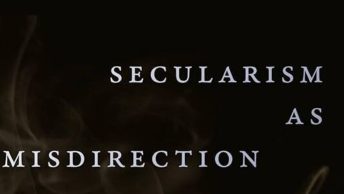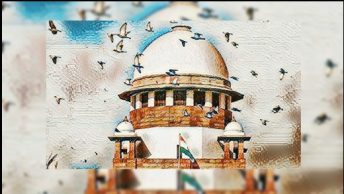Guest Post by Adithya Reddy
Gautam Bhatia’s book on free speech is a first of its kind work on any Part III right. It will be indispensable reading for any future research on the constitutional history of free speech, as also on the contemporary status of this right in the country in comparison to other common law jurisdictions. What Bhatia seeks to do in this book, however, is much more than provide an exhaustive or even critical work on legal developments in free speech jurisprudence. He discusses the philosophy of free speech in some detail. He does so not through a single thread of argument or theory but by offering snippets from the views of various philosophers. Some of these views are used to buttress his own arguments while others help in explaining the philosophical underpinnings of hard facts in case law.
Right at the beginning of the book
he attempts to offer justification for the need to understand the philosophy of this freedom. In choosing the example of the
Sakal Papers case to do this, he skips discussion on the more fundamental aspects of free speech philosophy.
Sakal Papers case and his entire discussion of the “meaning of freedom” centres around the philosophy of market/ ‘background’ regulation as a means of regulating free speech. This, just like his detailed discussions on whether speech can be restricted through prior restraint or what should be the content of free speech, is secondary to a larger philosophical question – articulated by Professor Tom Nagel in his
Dewey Lecture at the Harvard Law School. The question is whether a rule (in this case the protection of autonomy to express oneself) should be followed only for the sake of its adherence or because of the consequences of the failure to do so. While discussing John Stuart Mill, Bhatia acknowledges the hazards of a purely consequentialist justification for free speech. But Bhatia’s discussion of alternatives including Thomas Scanlon’s theory of autonomy, Dworkin’s endorsement theory or Habermas’s self-legislation, is not satisfactory. These views, as mentioned earlier, are brought out only in the form of snippets and do not help Bhatia build any cogent argument. Bhatia acknowledges that many of these anti-consequentialist alternatives have their origins in Kant, without realising that in Kantian philosophy dichotomies such as those highlighted in the book (for example, between public morality and individual autonomy) blur to such an extent that (while criticising Dworkin) the Legal Positivist Mathew Kramer misleadingly points to the “manipulability of the Kantian ideal”.
[1] While these shortcomings can justifiably be overlooked since the book is not an exclusively philosophical work, Bhatia’s attempt to weave a bit of his own philosophy on ‘constitutional morality’ in a couple of chapters is the book’s weakest part. In his chapter on obscenity, Bhatia concludes that morality as considered by Indian courts in various judgments does not offer satisfactory basis for restricting free speech. Therefore, he proposes, on the lines of Dworkin and many other writers, that the morality that the courts should use to guide themselves in restricting free speech should be ‘Constitutional morality’. According to Bhatia, constitutional morality is morality that is located within the constitution as opposed to morality reflected by perceived social standards or the individual morality of the judge concerned. Therefore, for Bhatia, equality being such a fundamental principle of our constitution should offer a valid basis for our courts to determine the extent of any restriction. The first problem with this postulation is that it requires reading of one part of the constitution in the light of another, even if the latter was not meant to be of relevance to the former. Taking inspiration from American feminists and the Canadian decision of R. V. Butler, he postulates that the equality principle could be a legitimate tool for interpreting ‘decency & morality’ in Article 19(2) to restrict pornography since it has the effect of “subordination and silencing of women”. The effect of such a reading may be quite drastic. It would mean that while some obscene material could be restricted on the ground of perpetuating gender bias, material with far greater degree of obscenity will escape restriction if it carries no offence to the principle of equality or any other principle ‘located within the constitution’.
Bhatia’s juxtaposition of this theory of constitutional morality in the context of hate speech (following Dworkin’s pupil and critic Jeremy Waldron) is far more problematic. Holding that restriction on hate speech should be viewed as a means of ensuring inclusiveness also means that hate speech is permissible against the mainstream and restriction should be independent of the level of hate involved. In the
Indian context the definition of marginal groups and groups that require ‘inclusive’ treatment can be deeply controversial. In at least a couple of places Bhatia hints that this approach could have a caste dimension.
Neither Dworkin nor Dr. Ambedkar
[2], while laying down their versions of constitutional morality, required such morality to be located in any individual principle located in the Constitution. Constitutional morality is about reading the Constitution as a whole in the light of the historicity of its founding principles. It can be nobody’s case that any provision of the Constitution appeared out of thin air or even from the pure intellect of its founding fathers. Justice Vivian Bose calls the right under Art 14 “a way of life, rather than a precise rule of law”.
[3] If that is so, would it not be necessary to consider when and how such a principle- gender equality, in the case of Bhatia’s example- became a part of Indian way of life? It is fairly settled that Indian consciousness on gender justice arose in the wake of the Bengali renaissance, which was essentially a conservative movement rather than a liberal one. If Raja Ram Mohan Roy relied on the rights of ancient Hindu women
[4] to demand equal share of property for women, would similar ancient principles not be relevant today if the Supreme Court were to understand equality and gender justice? In fact, Dworkin’s version of constitutional morality in the American context requires precisely such a reading of the Constitution. He says that the restriction on allowing judges to use their own morality in interpreting the Constitution should be “the moral reading…that fits the broad story of America’s historical record”.
[5] His example is even more telling –“Even a judge who believes that abstract justice requires economic equality cannot interpret the equal protection clause as making…collective ownership of productive measure, a constitutional requirement because that interpretation
simply does not fit American history or practice.” Therefore, constitutional morality is not about reading one facet of the Constitution in light of another merely because both are located in the same text but by reading each facet through its own morality. Viewed in this context, one should not feel so much indignation, like Bhatia does, at the Supreme Court’s view in
Rangarajan’s case that speech should be tempered by concepts such as “
Dharam” or the principles of “
Thirukkural”.
Bhatia’s views on equality as a guide for restricting free speech also exposes incoherence in his philosophical analysis. After criticizing
Ranjit Udeshi’s paternalistic view of morality using Dworkin’s theory of endorsement, he relies on a school of thought termed by Dworkin as the “strongest new attack on freedom of speech”
[6] to define morality. As mentioned earlier Bhatia believes that the American feminist intellectual movement against pornography offers a reasonable example of equality being used to restrict free speech. Dworkin was the strongest critic of the works of Catharine Mackinnon and Andrea Dworkin which advocated this approach. Bhatia should not have skirted this debate.
Some of Bhatia’s other individual views appear to be ideological and are not adequately rationalized. For instance, he offers no major justification for placing commercial speech on a lower pedestal under Art 19(1)(a) except that Indian circumstances don’t warrant wholesale importation of “American Jurisprudence and Reasoning on Commercial speech”. Rather than getting lost in the byways of argumentation, Bhatia should have focused efforts on delving deeper into the philosophical positions of the several writers he attempts to survey.
(Adithya Reddy is a lawyer practicing before the High Court of Madras)




